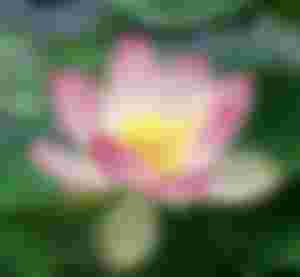
To start, the lotus has a life cycle unlike any other plant. With its roots latched in mud, it submerges every night into river water and miraculously re-blooms the next morning, sparklingly clean. In many cultures, this process associates the flower with rebirth and spiritual enlightenment. With its daily process of life, death, and reemergence, its no wonder that the lotus holds such symbolism.

Because of these meanings, the lotus is often seen alongside divine figures in some cultures. For the Egyptians, the flower represents the universe. In Hindu culture, it is said that gods and goddesses sat on lotus thrones. And a longstanding Buddhist story states that the Buddha appeared atop a floating lotus, and his first footsteps on Earth left lotus blossoms

As divine as the Gods, the flower of rebirth was thought to contain magical properties as well. The ancient Egyptians believed lotuses had the ability to resurrect the deceased, as seen in

“The lotus flower blooms most beautifully from the deepest and thickest mud.”
Each flower color also has its own symbolism. For Buddhist practitioners, a white lotus symbolizes purity, whereas a yellow lotus is associated with spiritual ascension. However, the real question remains: how has the flower acquired such all-encompassing spiritual significance?





